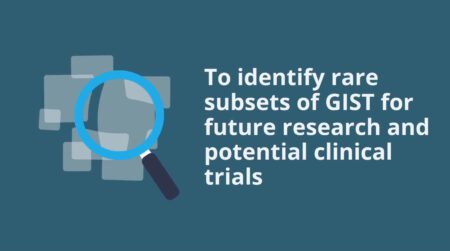It’s #TimeToGetTested
Understanding the role of mutations and biomarker testing is one of most important things patients must learn. Uncovering the driving force behind each individual’s tumors is not just important, it is critical. Biomarker testing is an opportunity to improve and optimize treatment – possibly avoiding unnecessary treatments and getting to the right treatment sooner. Currently, biomarker testing rates in the gastrointestinal stromal tumor patient population are relatively poor – only about 26.7% of patients have had testing done. The Life Raft Group Patient Registry, which is a group of extremely proactive patients, notes only about 53% of patients are aware of their mutation.
This is why the LRG is launching the It’s Time campaign. It is time to stop talking and take action to assure patients get tested. The goals of this campaign are to improve the understanding of biomarker testing in the cancer community and increase the number of patients tested.
In this post, we talk about identifying rare subsets of GIST and new clinical trials.
It’s time to identify rare subsets of GIST for future research and potential clinical trials!

On May 3rd, Dr. Andrew Blakely, surgical oncologist with the National Institutes of Health (NIH), presented information to the Consortium about his latest trial at an April meeting of the Pediatric & SDH-Deficient GIST Consortium. This study is titled: Surgery in Gastrointestinal Stromal Tumors (GISTs) for Treatment, Tumor Modeling, and Genomic Analysis NCT04557969 – A Prospective Observational study that will monitor GIST patients long-term pre- and post-surgery.
Both wildtype and non-wildtype patients are eligible for this study. The objective is to get more tumor tissue to support translational analysis to help with PDX (patient derived xenograft) models1, cell lines, organoids, and preserved tumor micro environments for ex-vivo investigation.
All participants are in 1 cohort/1 arm. Everyone undergoes the same protocol regardless of their type of GIST. Participants will be monitored every six – 12 months at the NIH Clinical Center, for up to 10 years before having surgery. If they need surgery, it will be performed at the NIH. Then, they will be monitored every six -twelve months, for up to 5 years after surgery. With surgery, tumor tissue samples will be taken.
If a participant does not need surgery, their participation will end after 10 years. If they have surgery, the five-year monitoring period will restart after each surgery. Surveillance can also be done locally. The NIH will offer patients next generation sequencing (NGS) and support in translational initiatives. Protocol details are listed at the ClinicalTrials.gov for NCT04557969.
This trial is exciting because patients who may be at stage 4 disease can consider going there for surgery (even to debulk liver). Additionally, international or non-insured patients are eligible to join study as care is covered at NIH. Transportation to and from the NIH is not covered and post-discharge care is not covered by NIH. The NIH has been able to do more virtual visits due to new standards set during the covid pandemic and patients can upload their scans into the NIH system.
The concept of the study is to preserve tumor tissue and tumor micro-environment for futher investigation. Dr. Blakely will perform live tumor imaging using a custom 3D printed platform. He will also evaluate biomarkers and look at therapeutic agents to test on tissue. Overall, this is a good platform to test drug candidates.
The meeting concluded with great collaboration prospects among the various global medical institutions regarding sharing of tissue and datasets — all of which foster our ultimate goal for the Pediatric & SDH-Deficient GIST Consortium.
1 PDX models mostly retain the principal histologic and genetic characteristics of their donor tumor and remain stable across passages. These models have been shown to be predictive of clinical outcomes and are being used for preclinical drug evaluation, biomarker identification, biologic studies, and personalized medicine strategies. (Hidalgo, et. Al., Patient-derived xenograft models: an emerging platform for translational cancer research, Cancer Discov. 2014 Sep;4(9):998-1013. doi: 10.1158/2159-8290.CD-14-0001. Epub 2014 Jul 15. https://pubmed.ncbi.nlm.nih.gov/25185190/)

Dr. Andrew Blakely, NIH
Assistant Research Physician, Surgical Oncology Program
Program Director, Surgical Oncology Research Fellowship
Read more about the Pediatric & SDH-Deficient GIST Consortium.
If you would like to talk to someone about mutational testing, please contact our Director of the Life Raft Group Patient Registry, Denisse Montoya at dmontoya@liferaftgroup.org
Special thanks to the sponsors of this initiative:





